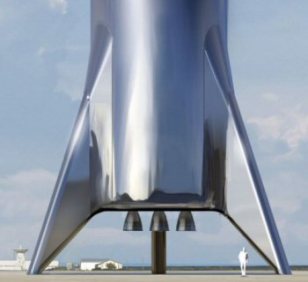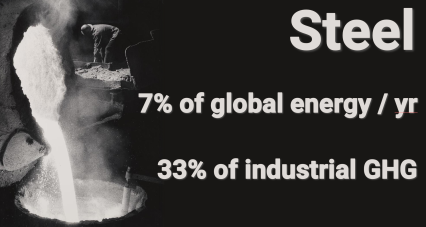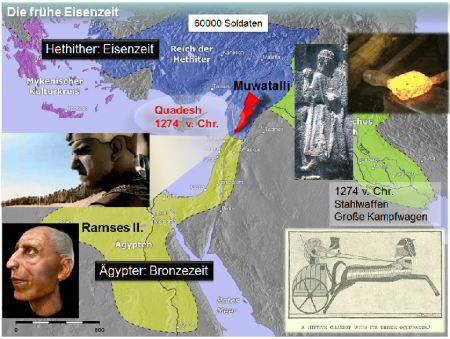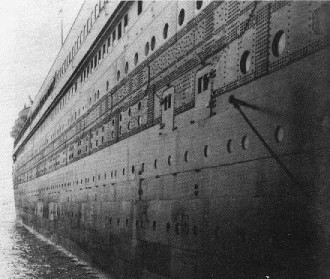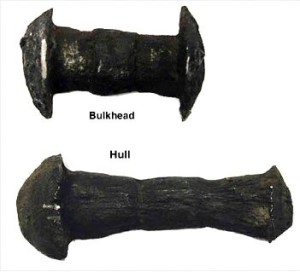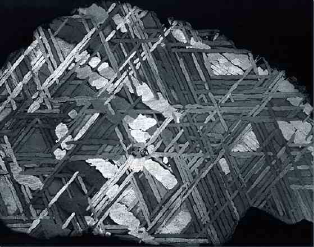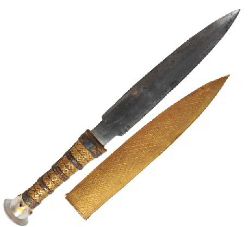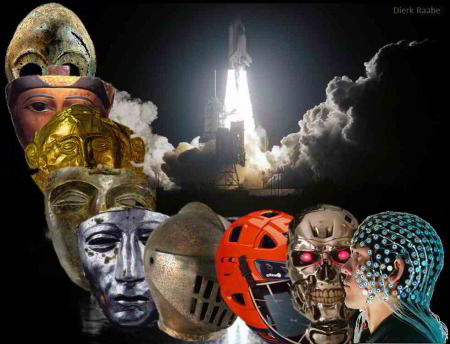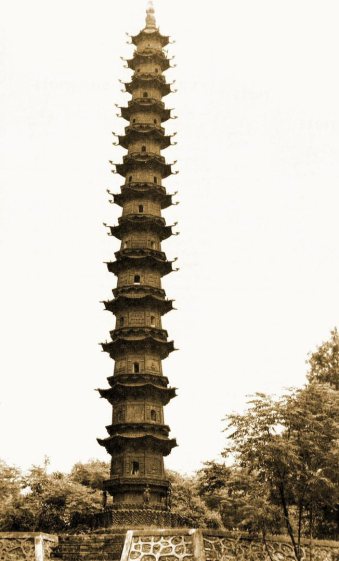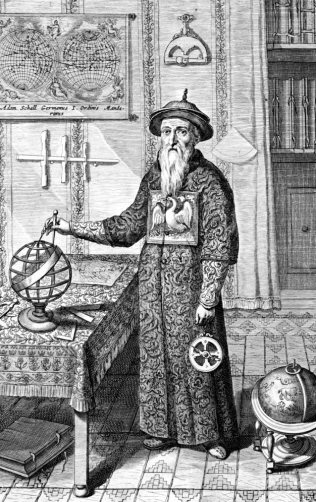Useless information about materials
Here is some quite unnecessary knowledge about materials science. Best is to stop reading here. Or is it probably not useless?
The global market for materials is 3500 billion € per year.
The Cobalt-60 isotope is used to create gamma rays which are used to treat cancer and to sterilize medical instruments.
The general abundance of elements in the earth's crust is irrelevant for efficient and sustainable mining, but it is the local agglomeration of elements in confined regions that matters.
The global cost of corrosion is estimated to be US$2.5 trillion, which is equivalent to 3.4% of the global gross domestic product.
The Nok culture existed in Nigeria from around 500 B.C.E. to 200 C.E. They farmed crops and used iron tools.
The electrification of society and industry proceeds rapidly, aiming to use more sustainable electrical power. This leads to massive acceleration in the use of copper (due to its low electrical resistivity). 95% of all copper ever mined was extracted after 1900. More than half has been extracted in the last 24 years.
The aluminum material fraction in vehicles is doubling from 8% to 16%
between 2008 and 2025.
The global scrap use in steelmaking is about 600 Million tons per year.
Most of the undesired impurity elements in steel making come from the coke (used in the blast furnace) and not from the iron oxides.
The dislocation line length in one cubic meter of heavily cold deformed metal can get as high as 1 light year.
Titanium is a poor electrical conductor. Taking the conductivity of copper as 100%, titanium has a conductivity of only 3.1%. Stainless steel has 3.5% and aluminum 30%.
George Washington and Thomas Jefferson were good coppersmiths.
We are producing about 1.9 billion tons of steels every year around the globe. The global average carbon footprint of this essential material is nearly two tons of carbon dioxide emission per ton of steel produced. Do the maths!
There are different approaches for the production of sustainable steel, with much lower carbon dioxide emissions, such as hydrogen-based direct reduction, hydrogen-based plasma reduction, high temperature molten salt electrolysis, low temperature acidic or alkaline electrolysis, or scrap melting, to name but the few options that are currently studied in research; see details here:
https://pubs.acs.org/doi/full/10.1021/acs.chemrev.2c0079
Silver can kill bacteria, even those previously thought immune to antibacterial agents. Silver bullets used to shoot vampires seem to work also.
In the battle of Kadesh (1274 BC) an iron age empire (Hittite) was fighting against a bronze age empire (Egypt). The outcome led to the first documented peace treaty
in human history, shown in the UN building in N.Y..
Samarium (Sm, 62) was the first element named after a person. Samarium is named for its ore, samarskite, which in turn is named after V.E. Samarsky-Bukjovets, the Russian engineer who found it and provided samples to other researchers.
You thought that steel is not 'rocket science'? Then take a look at the latest rocket design of SpaceX - it's all steel...
Inuit tribes in the artic regions made metal-bio composites by cold cladding meteoritic Fe-Ni alloys to whale tooth long before the iron age.
Producing new steel from recycled scrap steel requires only about a quarter of energy required to produce it from iron ore.
Producing aluminium from recycled scrap aluminium requires 95% less energy than aluminium produced from ores. Therefore aluminum is also
called "solidified electricity" because it takes so much energy to make it from its ore (bauxite).
Even for steel, recycling uses about 1/4th the energy as making virgin steel.
The earliest recorded welds occured in 3500 B.C., i.e. in the Bronze-Age. Pictures of welders and their ancient tools have been discovered in Egyptian tombs.
The high current copper demand (for the electrification of industry, transport and households) has led to the use of Ar-containing copper-minerals for metal extraction. The risk of using Arsenic (Ar)-containing copper ores for copper production is the potential release of Arsenic into the environment during the mining and extraction processes. Arsenic is a toxic element that poses serious health and environmental hazards. Proper handling and disposal of Arsenic-containing waste are necessary to prevent contamination of soil, water, and air, which can adversely impact ecosystems and human health.
Deep sea mining refers to the extraction of valuable minerals and resources from the seabed in the deep ocean. While it offers potential economic benefits and access to untapped resources, it also presents several risks and concerns.
Steel production uses about 8% of the global energy and causes about 33% of all industrial green house gas emissions, due to the use of fossil carbon carriers as reductants.
Rubidium is named after the Latin word for "red," and it produces a thick brick red flame. It is so highly reactive to water and air that it must be stored in oil for safety reasons.
Just 5% of the Earth’s population produces 40% of the Earth’s waste.
Steels can be easily separated from other materials in scrap by using large magnets. Of course, the magnetic portion of scrap can also contain Nickel, Cobalt, Dysprosium and Gadolinium so better double check ;-)
Caesium is the material most often used to make atomic clocks. They are considered the most accurate timekeeping devices.
There are 38 transition metals, all with similar properties; they are hard and have high melting and boiling points. They are ductile, malleable with high electrical and heat conductivity. They have
positively charged forms or stable oxidation states which allow them to form many different compounds. They also have low ionization energies.
Pt, Pd, Rh and their alloys are widely used catalysts such as vehicle exhausts. A rich solution “washed” onto a ceramic substrate can leave a catalytic surface. The surface can also be a robust
construction of woven or knit wire that provides a large surface for chemical production. Pt-based catalysts have been used for nitric acid production for more than 100 years.
When you throw away an aluminum can you are wasting the equivalent amount of energy of filling up that same can with gasoline and pouring it on the ground.
Fe-Ni type stainless steels fall from sky in the form of meteorites. They have been used in arctic regions by inuit to fabricate tools and weapons.
Emperor Napoleon III's most important guests were given aluminum cutlery, while those less worthy dined with silver. Although aluminum is the third most abundant element and the most abundant metal
in the Earth's crust, it was at that time very difficult to be reduced from its oxide. The costs to refine it made aluminum more valuable than gold. The first aluminum bars were exhibited at the
World Expo of 1855.
The global recycling industry employs over 1.5 million people, making it a $160 billion a year industry.
Plutonium has under ambient pressure six allotropes.
Most commercially relevant heavy metals (such as gold, cobalt, iron, manganese, molybdenum, nickel, osmium, palladium, platinum, rhenium, rhodium, ruthenium, tungsten etc) that are mined from Earth's
crust, came originally from asteroid bombardement that hit Earth after the crust had cooled. Although asteroids and Earth agglomerated from the same materials, Earth's stronger
gravity dragged all heavy siderophilic (iron-loving) elements into its core during its molten youth more than 4 billion years ago. This left the crust depleted of such elements until asteroid impacts
re-infused the depleted crust with metals. Also, some flow from core to surface enriched the crust in these elements.
Francium is the most reactive of all metals.
When a current flows through a metal conductor placed in a magnetic field, it creates a voltage difference perpendicular to both the current and the magnetic field, known as the Hall effect, which finds applications in various sensing and measurement devices.
Due to shortage of copper in WW II, the scientists in the Manhattan Project borrowed almost 13,000 tons of silver from the US Treasury to make wiring for the electromagnets in isotope-separating mass spectrometers. The wire, worth over a billion dollars at the time, was removed and returned after the war.
The Statue of Liberty is made of steel ! The creator of the Statue of Liberty, Frédéric-Auguste Bartholdi, thought well beyond the image of what would be the world's tallest
monument. He considered such practical matters as how to support 100 tons of copper plate and how to make the 151-ft-tall statue able to withstand the strong winds of New York Bay. For the solution
to these problems he turned to Gustave Eiffel, the engineer famous for his innovative bridge designs who would subsequently build the Eiffel Tower. Eiffel anticipated skyscraper construction when he
designed the Statue of Liberty's supporting frame made of steel.
Around one billion tires are produced in the world each year. The U.S. and EU each recycle only around 15% of their scrap tires, leaving lots of room for improvement in the rubber recycling arena!
Aluminum is extremely easy and cost effective to recycle but the global recycling rate for aluminum is only 69.1%.
The reduction of iron oxide by hydrogen gas is endothermic while reduction of iron oxide with a hydrogen plasma is exothermic.
Silver has a very volatile price, varying by up to a factor of 10.
Metals are excellent conductors of heat, allowing them to efficiently transfer thermal energy. This property is why metals, such as copper and aluminum, are widely used in heat sinks, electrical wiring, and cooking utensils.
Beryllium (E=287 GPa) is nearly 40% stiffer than steel (E=210 GPa).
The Titanic did not sink because the steel plates failed but because the rivets failed.
Iron is the most stable element in the universe: Fusion of two nuclei with lower masses than iron (which has the largest binding energy per nucleon) releases energy, while fusion of nuclei heavier than iron absorbs energy. The opposite is true for nuclear fission. This means that fusion generally occurs for elements lighter than iron and likewise fission occurs only for elements heavier than iron.
The word 'metal' stems from the Greek term 'metallon' which means to mine, excavate or extract from the soil.
3/4 of all elements in the periodic table are metals.
Titanium can osseointegrate, which means that it can fuse with bones and is one of the reasons why it is used extensively in biomedical implants.
Explosion welding is a powerful process that can join nearly every kind of metal together, which most other welding methods cannot do.
Beryllium oxide is an electrical insulator, yet, conducts heat very well. Therefore, Beryllium oxide is used as a high-voltage insulator because it conducts heat away while keeping them isolated electrically.
Pharao Tutankhamun's iron dagger blade closely correlates with meteoric composition, including homogeneity. Originally discovered in 1925 in Tutankhamun's tomb (14th C. BCE) by Howard Carter, an archaeologist, the iron dagger was believed to be of meteorite origin. However, until 2016 this material had remained untested.
Peter Durand invented the tin can in 1810 in England after the conservation principle was first discovered by the French Nicolas Appert. In 1813, John Hall and Bryan Dorkin opened the first canning factory in England. Only 1858 the can opener was invented by the American Ezra J. Warner.
Copper has very powerful anti-microbial properties. For example, a stainless steel sink will contain germs for two weeks while a copper sink will be germ-free in two hours.
You though that steel is not 'space science' ? Taenite (Fe,Ni) is a stainless steels - type mineral found naturally in iron meteorites. It is an alloy of iron and nickel, with nickel proportions of 20% up to 65%. It has forming and strain hardening properties which are superior to those of many man made steels.
Most materials used for cage diving with sharks would not withstand the attack of a great white or Tiger shark, due to salt water corrosion of the welded parts.
Steel is the main material used in delivering renewable energy – solar, tidal and wind. It contains also the hightest fraction of recycled material of all structural materials.
Aluminum is the most abundant metal in the Earth's crust, the most abundant element in the entire Earth is iron, Mg is second.
Making green steel is particularly efficient when using electrolysis or electric arc furnaces with a reducing atmosphere because they can essentially operate directly using sustainable electricity.
Aerogels are used in the spaceship 'stardust' on its travel to comet wild 2 as interstellar dust collectors.
Until 1735 no new metals had been discovered since prehistoric times; iron, copper, silver, gold, zinc, mercury, tin, lead and bismuth. When Georg Brandt recognized a tenth, Cobalt, he became the first ever known person to discover a metal. For thousands of years, cobalt was mistaken for bismuth.
Mercury in vaccines is not only not harmful but is in fact there to make the vaccine safer by preventing the growth of bacteria or fungi that could possibly contaminate the vaccine.
Considering steel’s position as the key product supplier to industries such as automotive, construction, transport, power and machine goods, and using a multiplier of 25:1, the steel industry is at the source of employment for more than 50 million people.
Tantalum was first discovered by Anders G. Ekeberg in 1802 in Sweden, in the minerals tantalite and yttrotantalite. In 1809 the well-known English chemist Willian Wollaston claimed there had been no discovery and there was no new element. Wollaston stated that Ekeberg’s new element was actually niobium, which had also been discovered in 1802. The scientific community came to believe Wollaston was right and that Ekeberg’s claim for a new element had been a mistake. Tantalum and niobium are in fact hard to separate from one another, which led to Wollaston’s error. Only in 1846 German mineralogist Heinrich Rose finally proved beyond doubt that tantalum and niobium were different elements. The case shows how bad reviewers can set back science.
Metal corrosion destroys 3-4% of the gross domestic product in developed countries each year.
A glue bond of the size of a 2 Euro coin can hold a ton. It contains cyanoacrylate as main ingredient.
The first implant material in mythology was ivory: the greek gods used it for the missing shoulder bone of Tantalos' son pelops.
More uranium is released by coal-fired power plants in one week than what has been released by all nuclear power plants combined (including Chernobyl/other accidents) over the past 50 years.
The name 'copper' stems form the antique name of the island Cyprus ('cuprum') where massive copper mining was conducted in ancient times.
The biggest gold nugget that has ever been found weighed approximately 90 kilogram and was unearthed in Australia.
Manganese compounds have been used since ancient times. Cave paintings were made 16,000 years ago with manganese dioxide.
The historical international prototype metre (meter) bar was made of an alloy of platinum (90wt%) and iridium (10wt%). It was the standard from 1889 to 1960.
About 80 thousand tons of steels were needed to build the Golden Gate Bridge. Only half of that would be needed now.
The vulcan Spock, octopus, snails, and spiders all have blue blood: The central atom of their hemoglobin is not iron (like in humans) but copper.
The first commercial mine for Al ore at Les Baux in France gave Bauxite its name.
The ancient names of iron are iren (anglo-saxons), isarnon (celts), isarn / isen (ancient german), ferrum (latin).
Gold is the only metal that is yellow or "golden". Other metals may develop a yellowish color, but only after they have oxidized or reacted with other chemicals.
24 karat gold is pure elemental gold. 18 karat gold is 75% pure gold. 14 karat gold is 58.5% pure gold, and 10 karat gold is 41.7% pure gold.
The gold on Earth stems from meteorite bombardment.
It has been proven that calcium is not as good for your bones as Vitamin K. Contrary to popular belief, milk is not the best thing for your bones. Avocado, peaches, and bananas are much better.
The word 'silver' comes from the Anglo-Saxon word seolfor. There is no word that rhymes with the English word silver.
Gallium melts in your hand (above 29.7°C).
The symbol for silver, Ag, comes from the Latin word for silver, argentum, which in turn derives from the Sanskit word argunas, which mean shining.
Silver is the only metal that gave a country its name: Argentina.
Silver is the best electric conductor of the elements. It is used as the standard by which other conductors are measured. On a scale of 0 to 100, silver ranks 100 in terms of
electrical conductivity. Copper ranks 97 and gold ranks 76.
Iron is one of the most plentiful elements. It comprises about 5.6% of the earth's crust and almost all of the earth's core.
Plants use iron in chlorophyll, the pigment used in photosynthesis. Humans use iron in hemoglobin molecules in blood to allow for the transport of oxygen to tissues throughout the
body.
Gold can grow on trees. This actually happens. When a tree has deep root growth, it can “strike gold” and absorb it through a biochemical process and in turn deposit the mineral into the tree’s bark and leaves.
Beryllium has a very anomalous nature: Its valence electron structure is 2S (2), its atomic radius is 89pm, the radius of the Be (2+) ion is 31pm, and the electronegativity of Be is high, i.e. 1.57. Beryllium is due to its atomic radius and ionic radius very small, yet, its Pauling electronegativity is relatively high, so that the tendency of beryllium to covalent bonds is significant, unlike similar elements that form mainly ionic compounds. Therefore, beryllium often exhibits anomalous properties that are very distinct from other elements of the same family.
Gold can be accumulated by bacteria. They can be used for recylcing gold from electronic waste, from computer chips for instance.
Rhodium has only one naturally occurring isotope.
Cobalt comes from the German word Kobold, which means goblin or evil spirit. It also has roots in the Greek word cobalos, which means mine. Cobalt based superalloys are very promising next-generation candidate materials for blade design for flying turbines.
The words tungsten (engl.) and Wolfram (germ.) come form the Swedish tung sten, heavy stone or wolf rahm and spumi lupi, respectively, because the ore wolframite
interfered with tin smelting and was believed to devour the tin.
Rhodium occurs naturally as a free metal or an alloy but it is not usually found as a mineral.
Vegatarians eat more titanium than non-vegatarians.
Over 100 million tons of plastic are consumed worldwide each year. Recycling one plastic bottle saves enough energy to power a 60W light bulb for six hours.
Discovery of Uranium Fissionability: In 1938 Otto Hahn and Fritz Strassman discovered that uranium could be split to release energy, that is fission.
Neanderthals may have used black manganese dioxide as a cosmetic 50 000 years ago.
About half of the crude steel consumed every year is made from recycled material.
Cracks start by atomic separation of single electronic bonds but they can lead to catastrophic failure of huge structures. This makes them one of the hardest multi-scale problems in materials science.
Households in the UK produce 30.5 million tons of waste each year, with only 17% of that waste being collected for recycling.
In as little as 60 days a recycled aluminum can is able to be back on the supermarket shelf.
Magnesium has a nearly hexagonal close-packed (HCP) crystal structure (c/a = 1.62, similar to Co), which influences its mechanical properties, such as its anisotropy.
Planetary formation models suggest that during the early stages of Earth's formation, a massive event called the "iron catastrophe" occurred, causing molten iron and nickel to sink towards the planet's core, contributing to the formation of the Earth's magnetic field.
Samarium is a so-called rare earth element. However, it is not rare. Actually, it is the 40th most abundant element on Earth. The average concentration of samarium in the Earth's crust is 6 parts per million.
Huge magnets collect millions of steel cans every day by pulling them out of garbage.
US Americans generate approximately 3.4 million tons of e-waste each year and only 27% of that gets recycled.
There is no word that rhymes with the English word silver.
Every human has about 0.0001 mg uranium inside their body.
Manufacturing of permanent magnets represents the single largest and most essential end use for rare earth elements accounting for about 25% of total consumption. Global demand for rare earth elements was estimated at roughly 136,000 tonnes in 2017.
The Yu Quan pagoda in Dangyang (Hubei, China) is 17.9 m high. It is made entirely of cast iron. It was erected in 1061 and is oldest still existing cast iron pagoda.
Most metals in pure state have absolutely no practical use as they are mechancially too soft and too costly to produce and purify. It is alloys we use, not metals.
Silver possesses natural antibacterial properties, which have been known for centuries. It can inhibit the growth of bacteria and prevent bacterial colonization, making it valuable in medical applications, such as wound dressings and antimicrobial coatings.
Platinum was likely discovered by Spanish conquistadors during their conquest of South America in the 16th century. However, they initially considered it an unimportant impurity in gold and discarded it. It was not until the 18th century that its true value and potential were recognized.
Magnesium has a high flammability and can ignite easily, often resulting in intense and difficult-to-extinguish fires. Special precautions are necessary when working with or storing magnesium to prevent fire hazards.
Frank Gehry's Guggenheim Museum in Bilbao, Spain, is made of titanium and glass.
Johann Adam Schall von Bell (1591-1669) was a german jesuit missionary. He supervised the manufacture of bronze canons for the chinese emperor, equipped them with self-made gunpowder, and tested them with success to fend off the invasion of the Manchu Tartars who ended the Ming Dynasty in 1644.
Silver metal is not toxic to humans. It can actually be used as a food decoration. However, most silver salts are toxic. Silver is germicidal, meaning it kills bacteria and other lower organisms.
The half life of uranium, i.e. the time elapsing to reduce the element to its half, is 4.468 billion years.
Along with iron, cobalt, and gadolinium, nickel is one of four elements that are magnetic at room temperature. Dysprosium has its Curie temperature below room temperature.
The word silver comes from the Anglo-Saxon word seolfor.
In the US alone over 100 million tin and steel cans are used every day.
At low temperatures, gadolinium is more ferromagnetic than iron.
In as little as 60 days a recycled aluminum can is able to be back on the supermarket shelf.
The word Osmium originates from the Greek word 'osme' meaning odor.
Manganese is essential for photosynthesis. Without it, there would be no free oxygen on earth.
Manganese in humans needs to be topped up frequently because our bodies cannot store it.
The tallest free-standing structures in the world are made of steel. They include the Dubai skyscraper Burj Kalifa, the Tokyo television tower Skytree, and the Shaghai Tower skyscraper.
The only metal that is a liquid at ordinary room temperature and pressure is mercury. However, other metals melt close to room temperature. For example, you can melt the metal gallium in the palm of your hand,
Up until Medieval Times, there were only 7 known metals, which were called the Metals of Antiquity. The Metals of Antiquity and their approximate discovery dates are: Gold (6000 BC), Copper (9000 BC), Silver (4000 BC), Lead (6400 BC), Tin (3000 BC), Iron (1500 BC) and Mercury (1500 BC).
By weight, beryllium has six times the specific stiffness of steel.
The word "gold" comes from the Old Anglo-Saxon word "geolu," meaning yellow.
Around 161,000 tons of gold have been mined by humans.
Recycling one aluminum can saves enough energy to run a TV for three hours.
The rare earth elements, of which there are 15 in number, occur together in nature with two non-lanthanide elements, scandium and yttrium. All 17 elements behave similarly chemically. Although scandium and yttrium are transition metals, they are often included in the same group as the lanthanides. The 17 rare earth metals, by name and atomic weight, are scandium (21), yttrium (39), lanthanum (57), cerium (58), praseodymium (59), neodymium (60), promethium (61), samarium (62), europium (63), gadolinium (64), terbium (65), dysprosium (66), holmium (67), erbium (68), thulium (69), ytterbium (70), and lutetium (71).
When tossing a penny 10,000 times, it will not be heads 5000 times, but more like 4950. The heads picture weighs more, so it ends up on the bottom. This nonsymmetry applies to most coins.


